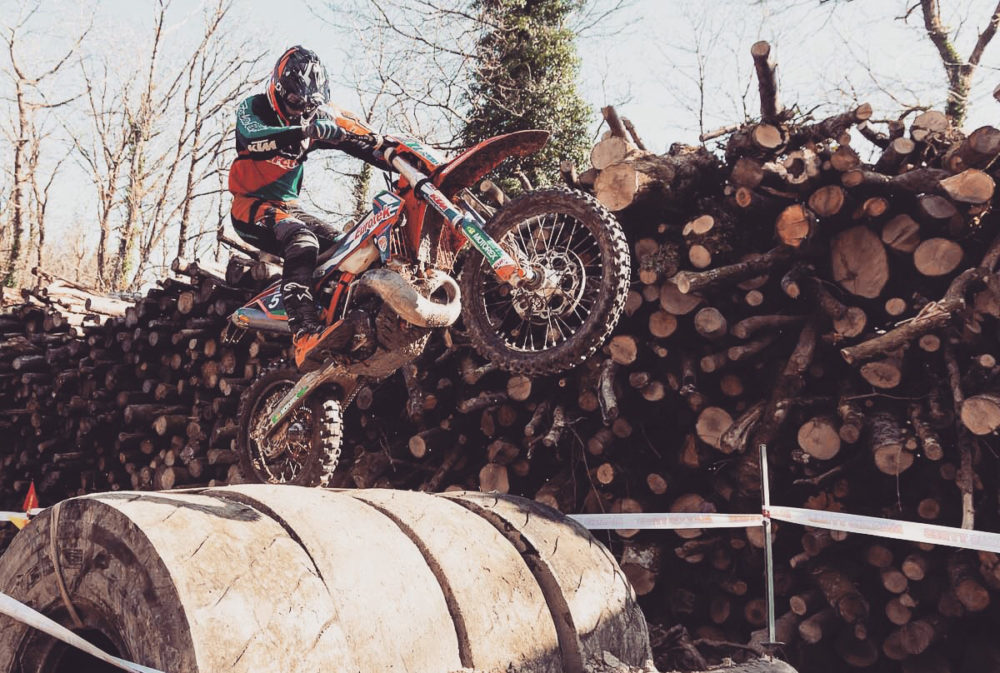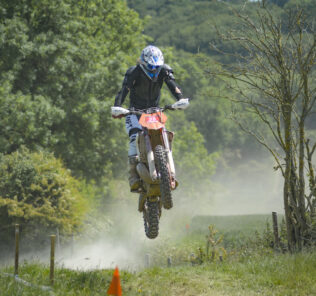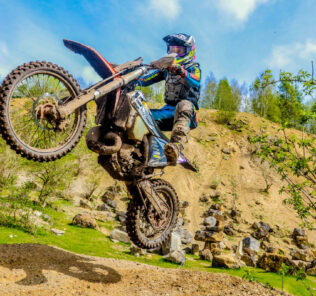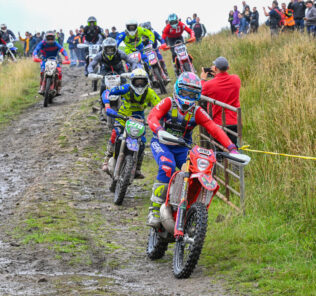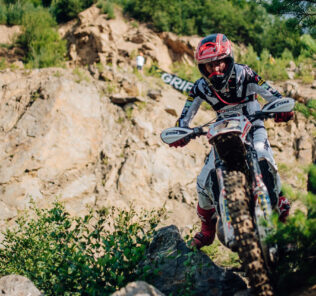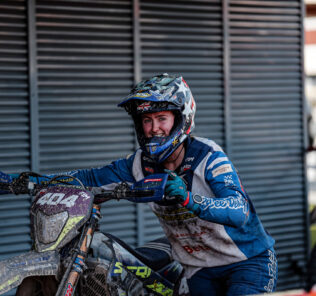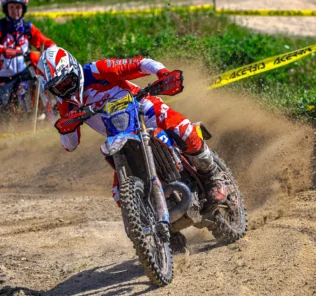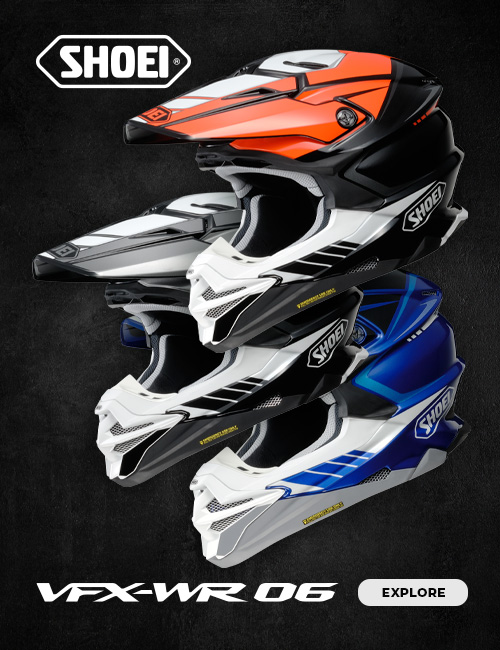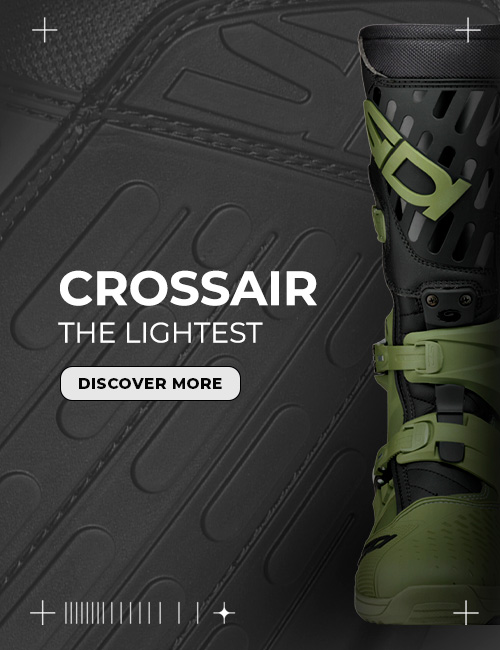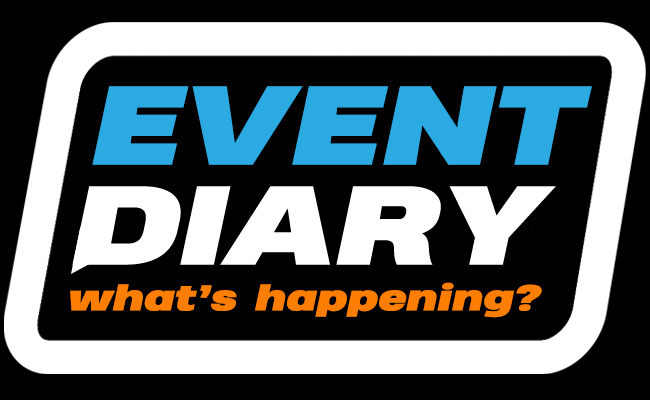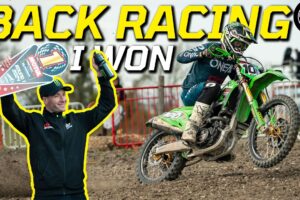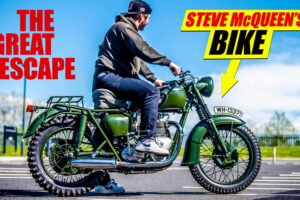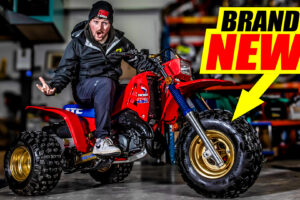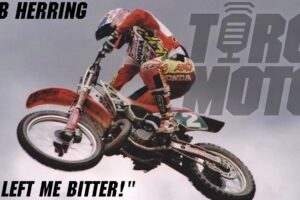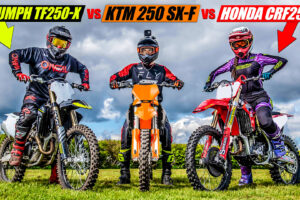Life in the Extreme! Charlie Frost Interview part 2
The second part of our interview with our Feature Extreme Enduro athlete Charlie Frost delves further into what it takes to make it in Extreme Enduro and how you prepare yourself to be mentally, physically and machinery ready to take on whatever comes your way…
Feature image courtesy of Roadrunner Photography
Dirt Hub: So Charlie how do you train for Extreme Enduro?
Charlie Frost: For me, Swimming is the best. It exercises every part of your body. So I do 20 lengths at a time, have a breather then carry on. For the training side of things, it’s tricky. Cycling is good as well for your legs and prevents cramp. If you come into an Extreme and you don’t train, you are going to get cramp as your muscles aren’t used to the sudden flow of blood. So for me, cycling and swimming are the two main activities that I like to do.
The actual bike riding sort of things its just getting yourself into the situation where you are stuck, and you have to think to yourself how do I get out of this. Instead of going around a simple Enduro tracks for 15 to 20 minutes, which most Enduro lads do, for the Extreme riders you to have to put yourself in difficult situations like you would have if you were in the mountains.
For me, I like to go out into the Forests and find a steep hill and test myself. If I can’t make it up in one straight run, then I use pivot turns, and get myself onto flatter surfaces, then maybe find some tree’s to push off. So training for me so is all about putting myself into situations that you are going to get into, in a race.
DH: Line choices must be critical, is that something you can learn or practice or is it just a case of the more you race, the more you learn?
Charlie: Yeah like you said, bike time is the main thing. You can be as fit as a fiddle in the Gym. You can be at the gym, swimming, on the rowing machine… that’s great, but if you spend say 3 out of 4 days at the Gym and one on the bike when it comes to the next race, you can think, yeah I’m fit, but you come to an awkward hill, and you won’t be ready for it. You have to balance it out. Line choice is definitely the thing.
I did it at Tong. There was a tricky hill at the back, and the main line had a bit of a slippery log, kind of exposed to form a sort of slab, but just to the right there was a tree, so instead, I hit that and didn’t struggle. There is a video of Graham Jarvis, and he comes around the corner and hits this log and gets it a bit wrong. To him its just 3 or 4 seconds, but at his sort of pace, he needs to be gaining time not losing it. But for me taking the tree line rather than the slab saved me from getting it wrong, and having to go back down and have another go. So it’s hugely important to get the correct lines, so sometimes it’s best when you get to a tricky bit to take your time, look up and make your choice based on what looks best and whats not blocked.

DH: I suppose it is not just about being physically fit, its also about being mentally tough as well?
Charlie: Yeah I am definitely one for that as I do get myself worked up quite a lot, which is only frustration. You want to keep it professional when your on the bike, your language down and what not, but my problem is when I get in a position where I am stuck or I am trying to get through something, or if I end up not getting something right, it comes out verbally. It’s not to do with the other riders, it’s myself getting so frustrated with myself that I can’t do this part of the track. I have to say to myself calm down and take a breather, take a step back access the situation and then move forward, because at times I come to a bit of the track, and where I haven’t looked up and looked at the line, I have missed the good line, gone into the bad line and messed it up, whereas if I had come back a bit and seen the good line everything would have been a lot easier.
So being mentally well trained for it is key. You have got to say to yourself if you have been on the bike for six hours you are going to be physically and mentally drained, so keeping yourself going is what you need to be doing. Keeping your head straight and breathing is the main thing. Taking a deep breath and having a break every now and again. Yeah, you have to mentally trained for it as well.
DH: From the outside looking in Graham Jarvis seems to be super calm. I don’t know if he is but being that way must really help?
Charlie: Yeah he is one of the more tame riders should we say. He is very quiet, and when you talk to him in the paddock, he is so down to earth. When you watch him ride there is no aggression, theres no shouting. you get the odd back marker that wont let him pass, he might shout at them now and again. He will only really rev it if he gets stuck. He is so quiet but he is so mentally well trained for it, but he has been doing it probably longer than I have been alive, so he is so used to knowing what to overcome and what to deal with. He is so laid back, but that is just his way of riding, whereas you get other people who are quite aggressive with their riding, but it still works for them, so each to their own, but the laid back approach certainly works for Graham.
DH: What additions and amendments do you make to a traditional Enduro bike for Extreme Enduro?
Charlie: From standard on a KTM EXC, the first thing I do is strip the bike down and fit a fan. It’s so important to keep the bike cool, as you get in positions where you aren’t moving but the bikes hot, so the fan is crucial to us. Disc Guards front and Rear. I have a carbon fibre one on the front to prevent any rocks bending the discs. On the rear, we have a Enduro Engineering guard, to stop you bending your back disc. You are jumping up rocks and squeezing through stuff so you want to make sure you don’t bend that, and it keeps it from being scuffed.
Pipe guards, a lot of people have front pipe guards, although I don’t personally as I like to have my pipe standard, but people use Carbon Fibre front guards to stop from any stone deflection damaging the pipe.
Handguards are crucial for us, people use actual wrap-around metal frame ones, to stop the levers getting bent or broken, but I just use brush guards, as its just a better feel for me. With us we have longer brake pedals. At Eurotek we use Enduro Engineering brake tips, which are longer and they have a gritted tooth to them so as soon as you go for the back brake you are on it and your foot isn’t slipping off.
Engine covers, we use Acerbis ones on both sides so you can cover the water pump and vice versa you can cover the other side. They are not too expensive but they make a real difference as if you are out with so many rocks and stones about you only need one fall or scuff one side, and you do your clutch cover then that’s game over. It just wastes a day, so having a little thing like that can make a huge difference in the race side of things.
People use tracked suspension and cone valve forks, but I just use standard suspension, and just get a valve for my size and my weight which personally works well for me. Everyone has their own preference on this.
Tyre choice wise, having a mousse is a really big thing for me, because if you are out for a big event and you get a puncture on the second lap, it’s a huge wasted journey and a result down the pan. So for us, we use the Winx Mousses front and rear.
On the tyres personally, I use a Metzeler 6 day competition tyre on the front, because it deals with the soft stuff as well as the hard stuff and you get the grip when you need it to. On the rear, we will use a Metzeler Super Soft Extreme Tyre, which is great at wrapping itself around the rocks. If you have a bit of give in your mousse, you have a lot of grip on your rear end when you need it. We have two rim locks on the back as well to stop the Mousse from spinning inside the tyre.
Its just prepping yourself as much as you can, so that you know when you are on the start line you are ready as much as possible to give yourself the opportunity to do well in the race.
DH: What do you take with you when you are riding?
Charlie: Everyone carries different things. Some people don’t carry anything, and just have tools in the pits.
I carry a bumbag with me. In that, I have a front brake and clutch lever, the basic KTM tool bag they give you and spark plugs. I also have a Kriegar Camelbak, and in that, I will just have two of the Non-fizzy Lucozade sports and just dilute it with some water to give me some refreshment on the way round.
In the pits I have my dumptank with about 15 to 20 litres of fuel in there, then I will have my tools in there. Being part of Eurotek, they have everything in there. So we have any spares that you could need, like throttle tubes… as much as you can to save you from going back to the van.
Charlie heads to Cowm this weekend for the second round of the British Extreme Enduro Championship.





